NVIDIA Shield Review: At the Crossroads of PC and Mobile Gaming
by Brian Klug on July 31, 2013 12:14 AM EST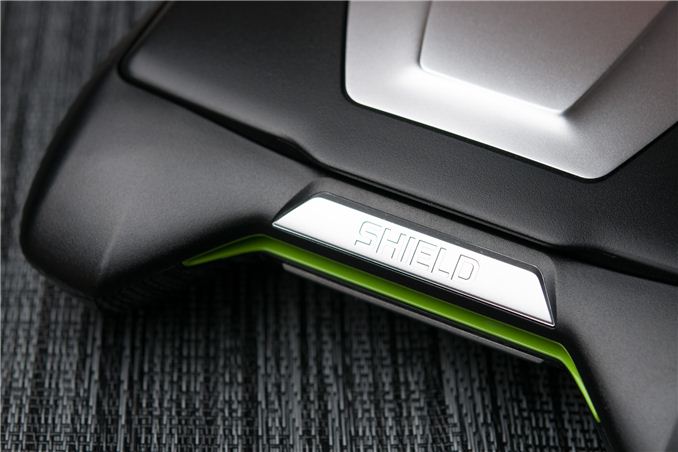
NVIDIA is doing something different with Tegra 4, very different. To bring up its silicon, each vendor usually makes a reference design phone and tablet with a selection of approved components, packages a BSP (Board Support Package), and ships that and some engineers to customers. Rather than never letting the reference design see the light of day, this time NVIDIA also made it into something they can sell directly, a portable gaming device called Shield.
It’s no secret that Tegra 4 isn’t exactly the success that NVIDIA probably hoped it would be. While the initial word was that Tegra 4 had an obvious set of design wins following momentum from products which shipped in 2012 through 2013 with Tegra 3, but it’s obvious that Shield will now effectively serve as NVIDIA’s launch vehicle for Tegra 4.
Shield is an aspirational product and not an easy one to nail down – enthusiasts are picky about controllers, Android gaming is still largely an unknown, and the question remains what presence handheld gaming consoles will have in the future. To answer all those questions NVIDIA sent over Shield, a Falcon Northwest Tiki with GTX 760 inside, and Parrot AR Drone 2.0 for us to review. Read on for the full story.
Introduction and Hardware
With Shield, NVIDIA gave us a rare glimpse into some of the stages of design. When Anand and I saw Shield at CES, it was more of a prototype than real, reviewable sample of the portable gaming device. The analog sticks weren’t weighted right, the plastic felt somewhat creaky, the triggers and bumpers felt hollow and strange, and the D-Pad worked, but not amazingly so. It was exactly what you’d expect from a prototype, and as Shield inched closer to final release the hardware got successively better and better, until the final unit dropped on our doorstep.
The hardware that is the shipping Shield today is a world better, it’s everything I was hoping Shield would end up being in terms of a controller, with the right balance and in-hand feel.
There’s so much scrutiny on the fit and finish of mobile devices these days, for NVIDIA to build a mobile device and gaming controller at the same time invites a whole new level of scrutiny, potential issues, and things to get tuned just right. I’ve purchased a few high end gaming controllers in my day (like a kitted out $125 Scuf FPS Competition Xbox 360 controller that I love), but hesitate to review them because of just how much there is to talk about, and how much of it comes down ultimately to taste.
Anand and I gave feedback to NVIDIA early on that they should arguably use the Xbox 360 controller as something of a baseline for tuning their controller components. With the Shield what we get is nearly exactly that. The analog trigger resistance, bumper clickiness, and analog stick friction feel remarkably like the 360, perhaps just a tad less. I consider the 360 controller out of the box nearly perfect, but some of that is adaption and familiarity versus being some global maxima for perfection. At the same time, if the PS3 controller is your bar, you’re probably going to have a bad time initially with Shield until you’ve adapted. Where Shield does borrow somewhat from the PS3 controller is the analog stick positioning, which is bottom center, instead of opposed top left and bottom right. One of my initial complaints was that my thumbs can collide with each other when left stick is at limits to the right, and right stick is at limits to the left (a complaint about the PS3 I have as well). NVIDIA seems to have spaced these a bit more and my thumbs aren’t quite hitting as much as they were previously.
Since the display has to close flat on the control surface, some of the shape is gated by the limitation that you can’t have the analog sticks or buttons ramming through the display, so they’re sunken down a bit. The rest of the interface (A/B/X/Y, NVIDIA, Back, Home, Start, Volume and D-Pad) rest roughly in the same plane. The spring preload on the buttons is great, though I wish they were maybe a touch less mushy for A/B/X/Y, and although I’m not much of a platform gamer, the D-Pad feels so much better now than it did before.
The shape of Shield fits in my hands really, really well. The bottom is a grippy, rubberized material that grabs the hands well and plants the Shield solidly on any surface you put it down on. The interesting shape on the back side, means I can rest my middle finger in a sort of folded position along the inside (something you can’t do with most wireless controllers) and it feels great. I have no issues with the mass of Shield fatiguing my hands or feeling awkward since it’s so well balanced and ergonomically shaped down there.
On the front of Shield is a green-tinted intake and grille for the device’s active cooling. When I first heard that Shield had active cooling I was a bit shocked, but it turns out to be completely unobtrusive in actual use.
With Shield open you can see the 5-inch 720p display surrounded by a somewhat large bezel. This remains my only complaint about Shield – I wish it had a slightly larger display that took up more of the fold-out area. Below that are stereo speakers that go loud (I love that stereo is now a feature showing up in more devices) and in the very middle is a microphone.
On the back of Shield are its I/O ports, which are microUSB 2.0, mini-HDMI, headphone jack, and microSDXC. There’s also the exhaust grille for Shield’s active cooler back here. Above the microUSB 2.0 port is a small charge status LED which is amber while plugged in and charging, and green when fully charged. I remain confused by the choice of mini-HDMI, when smartphones and tablets have universally adopted the microHDMI format plug, and I’m buried in those cables compared to a relative scarcity of mini-HDMI ones, though NVIDIA has shipped mini-HDMI GPUs before.
On the top of Shield is, well, a small shield, which NVIDIA calls a tag. This snaps onto the top and adds a bit of a customization option, it’s held in place with magnets. Out of the box the tag is a metallic silver material. It looks great but I’ve already managed to put a few hairline scratches into it, which leads me to my next point.
NVIDIA has a carrying case option available, but it really needs to give some kind of carrying case away with Shield. Although Shield feels really well constructed, right down to even the hinge mechanism, I’d like a better way to protect it, especially while traveling. I know I’m going to put more scratches into the silver tag while traveling with Shield in my bag, for example.
Shield’s in-hand feel is really, really good. NVIDIA seems to have nailed the device on the controller side, which is no small task considering this is their first attempt. As a handheld mobile device, it’s definitely on the large side, but it’s hard to really say anything negative about it since this is an entirely new form factor. Other smartphone solutions with a foldable control scheme on the phone are similarly bulky, the upside is with Shield it’s all packaged better. Again my only wishes from a purely hardware perspective would be an in-box case, bigger display, and inclusion of a front facing and rear facing camera of some kind – if nothing else for video chat and taking photos when you’ve got the Shield already in your hand.
| SHIELD (P2450A) | |
| SoC | NVIDIA Tegra 4 - 1.9 GHz |
| Display | 5-inch 1280x720 "Retinal" Display |
| RAM | 2 GB LPDDR3 |
| Wireless Connectivity | 2x2:2 802.11a/b/g/n WiFi + BT 3.0, GPS |
| Storage | 16 GB NAND total, microSD Expansion |
| I/O | microUSB 2.0, mini-HDMI, 3.5mm headphone, |
| OS | Android 4.2.1, Updates from NVIDIA |
| Battery | 28.8 Whr |
| Size / Mass | 158 x 135 x 57 mm, 579 grams |
| Buttons | Dual Analog Joysticks, D-Pad, Left/Right analog trigger and bumpers, A/B/X/Y buttons, Volume, Home, Back, Start, NVIDIA Power/Multifunction |
The hardware specs are pretty well understood at this point. There’s a Tegra 4 SoC inside working the 4 ARM Cortex A15s at up to 1.9 GHz (and one shadow core for low power), 72 GPU cores in that SoC, 2 GB of LPDDR3 RAM, 16 GB of built in flash, and 2x2:2 (yes, two stream) 802.11a/b/g/n WiFi from a BCM43241 combo which we’ve written about before.


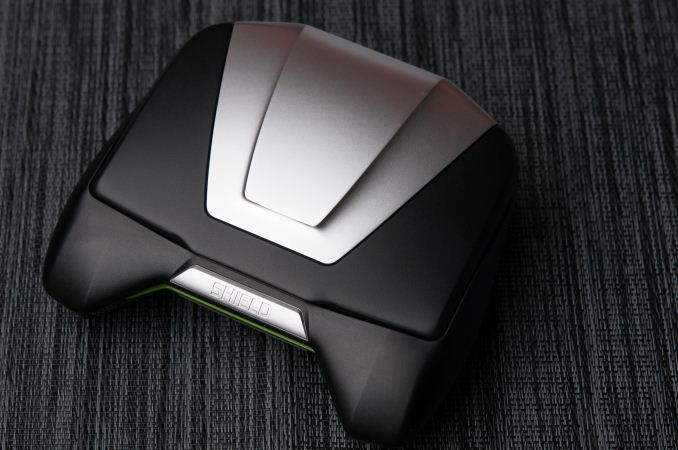
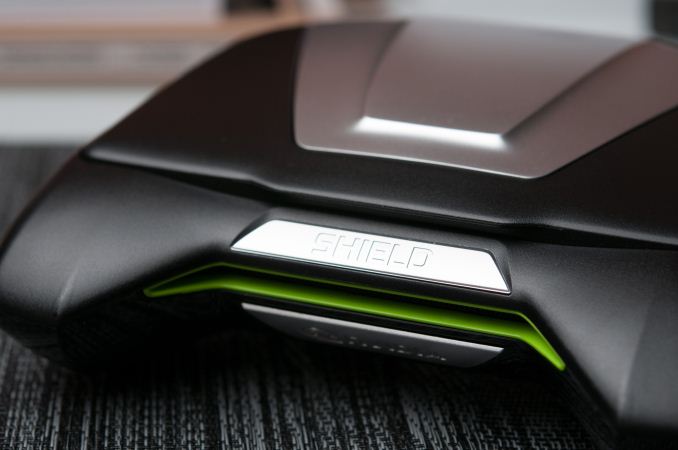


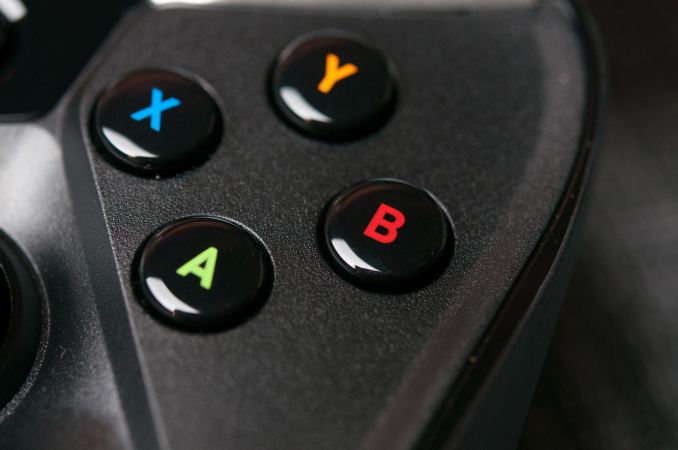
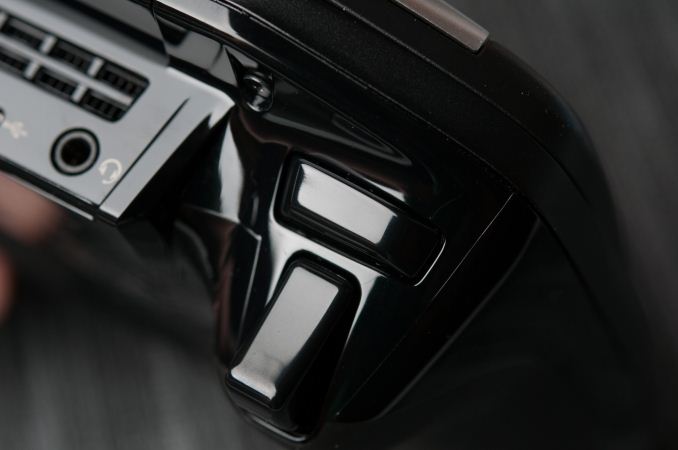
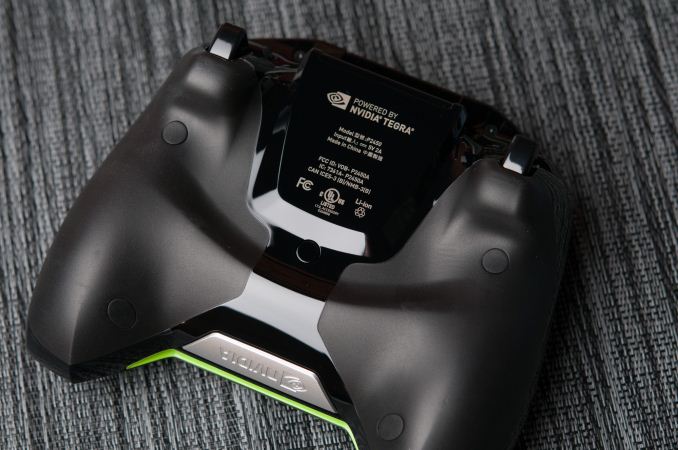
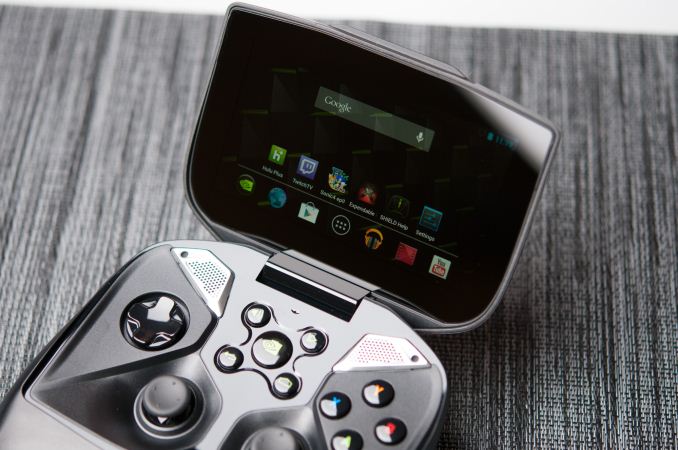
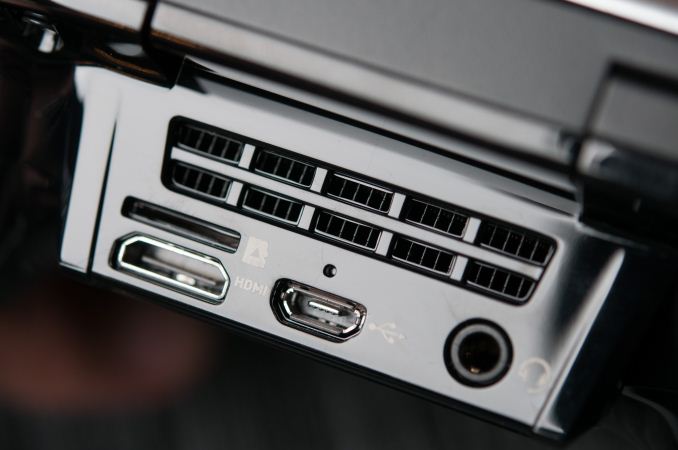
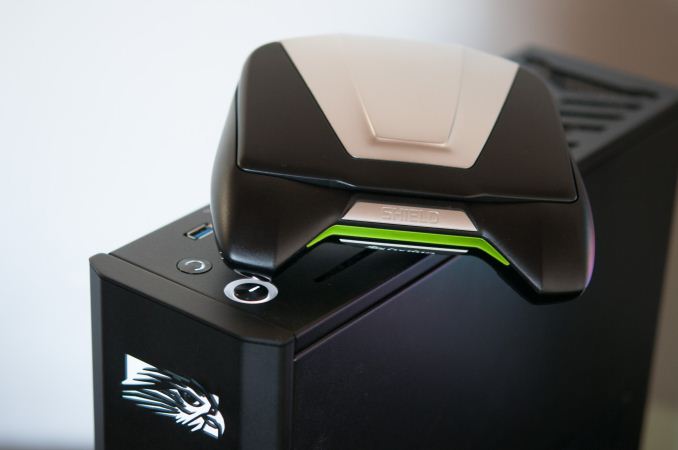














134 Comments
View All Comments
PC Perv - Thursday, August 1, 2013 - link
Sure weight balance matters.. for first 10 minutes or so. And no doubt it will be easier to hold something with evenly distributed weight than, say, something to heavy. But that doesn't mean it's absolute weight dissipate in the air because of shape. You will be holding 579g of weight no matter what. If you think 579g is "light," then I have nothing more to say. But the reviewer's bias is palpable.I'm looking forward to encountering someone holding this abominable. Hopefully he didn't buy this junk after reading this irresponsible "review." Look how this dude goes length to convince readers how this ugly is somehow "elegant."
tabascosauz - Thursday, August 1, 2013 - link
Who are you to hate on Brian?Do you seriously think that a portable game console will weigh the same as a 290g Nexus 7? It's a first step for Nvidia and it's performed well, so how did Brian write an "irresponsible review" and "convince readers how this ugly is somehow elegant"? He already said that he spent 2 hours playing BL2 and didn't feel too uncomfortable, what else do you need? Do YOU have a Nvidia Shield?
Spunjji - Thursday, August 1, 2013 - link
3DS XL: 336gPS Vita (3G): 279g
Not to defend the original poster too much, but the weight is very high for a product of this sort of category and that is indeed something that can only be properly assessed by a longer period of game-play.
Death666Angel - Thursday, August 1, 2013 - link
They are much less powerful, feature fewer and different (in my opinion, a bit inferior) controls, have much less battery life in them and are much less versatile. :) To think the Shield is a hand held console the kind Sony and Nintendo make is very misguided imho.jeffkibuule - Thursday, August 1, 2013 - link
Neither are designed to be very comfortable to hold for an extended period of time. Neither are ergonomic to your hands.PC Perv - Thursday, August 1, 2013 - link
Here is the question I pose to you: when do you think this author will realize this thing is heavy and ugly?Answer: when the next iteration of the Shield comes out. (If it does come out, lol) when the next version sport slimmer, lighter body then he will gush over how much improvement NV have made. He will THEN tell you how NV's first "attempt" was rather clunky and heavy (per "some" users). Until then he will be "oblivious" to the ugliness and monstrosity of this "Shield," and keep asserting how "elegant" and comfortable it is, blindshading potential buyers.
Of course he already knows all this. But in this type of "reviews" often there is something else is at work.
spugm1r3 - Tuesday, August 6, 2013 - link
Most people don't know how heavy or bulky something is, in particular if it is a joy to use, until the next iteration. I used to own an iBook that weighed just shy of 6lbs. It was hardly top of the line, but I loved it. Now, even Apple's most powerful portable is less than 5lbs.Other portable gaming consoles (3DS, Vita) play portable games or, at best, portable versions of console games. This plays PC games, in particular, PC games that are not exactly visual lightweights.
Honestly, some tech websites I could understand your cynicism, but Anandtech generally does a pretty good job of keeping it honest.
Subzero0000 - Thursday, August 1, 2013 - link
579g is definitely "light". There, I said it.I've been using iPad2 for almost 2 years, and I tend to feel it too"light" personally.
As for the Shield, you will hold it with two hands anyway. That weight would means nothing to a full grown man.
Spunjji - Thursday, August 1, 2013 - link
http://www.thefreedictionary.com/relative3.
You're entitled to your opinion but that doesn't make it valid for everyone else. ;)
chizow - Thursday, August 1, 2013 - link
I'm not going to argue the semantics of what you wrote, you questioned whether weight is relative to shape, in the hands, and yes of course it is. Overall the impact of total weight is relative sure, but you also seem to miss the fact people have different tolerances and preferences. Some contemporary and relevant examples today include the 360 controller vs PS3 controller and the iPhone vs. Samsung Galaxy. You will find people on both sides of the fence who prefer or abhor the different weight characteristics of each, based purely on personal preference.As for the commentary on aesthetics, you do realize that is one of the most subjective criteria out there right? That's about as subjective as people's tastes in cars, or even computer chassis. Yet in your criticism of Brian's choice of words, you do realize you come off as every bit the extremist in your own choice of words right?